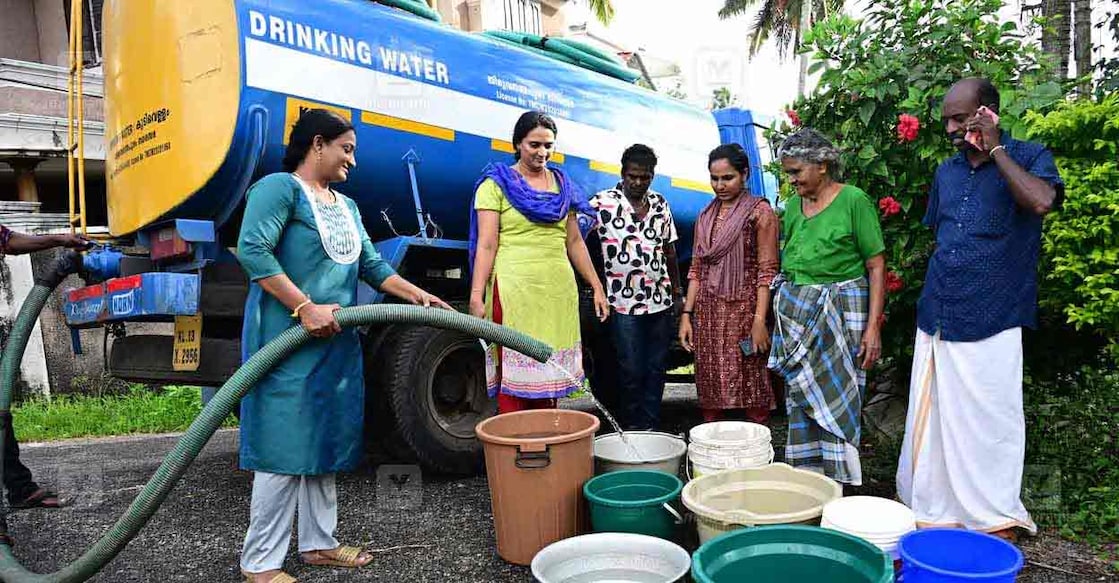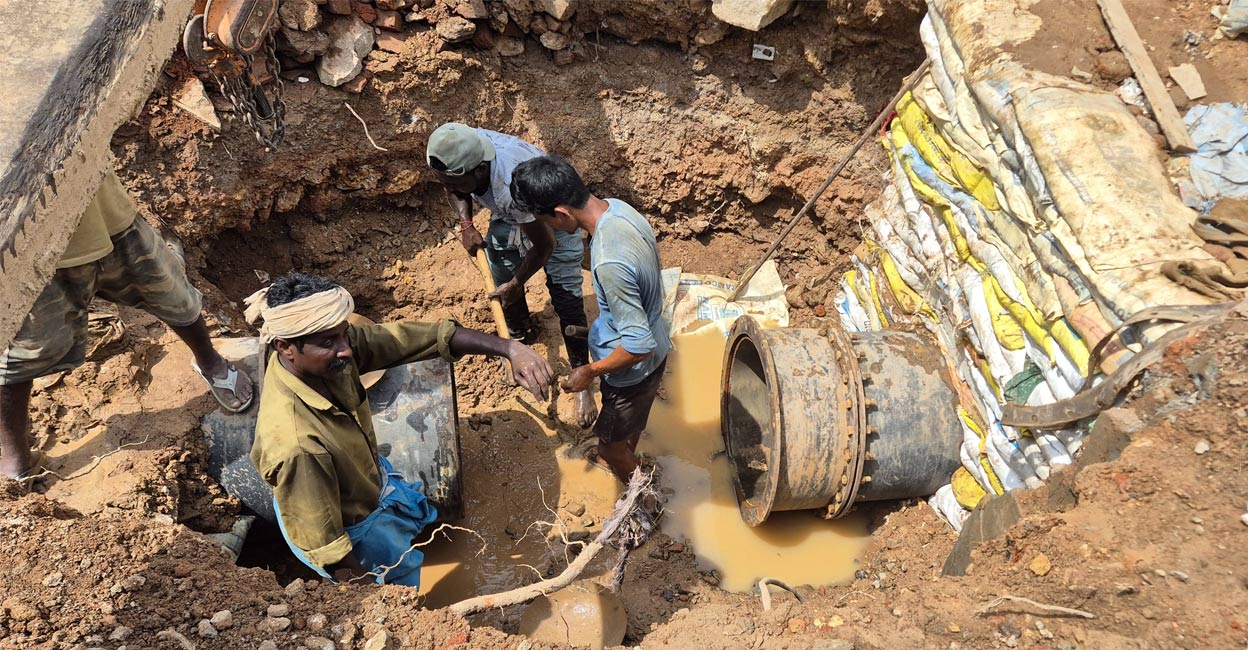TVM water crisis caused by official lapse? Why did KWA go for total shutdown, not valve closure?

Mail This Article
The water crisis in Thiruvananthapuram, which affected nearly half of the city wards in the past four days, is one of the worst in three decades especially after the 1997 Kummi pipe-burst incident.
Since January 1997, pipe bursts had happened at regular intervals at different places; Peroorkada on 700mm premo pipe, near All Saints College on 400mm premo pipe, at Murinjapalam on 400mm MS pipe and the major one was reported on the transmission line carrying water from Aruvikkara to Thiruvananthapuram city, when 1200mm DI pipe burst leading to severe water shortage in the city. It even led to the formation of a commission to probe causes and suggest recommendations.
The latest water crisis was not a result of any leakage. The plan was to halt water supply in selected areas, but what happened was a total shutdown, disrupting water supply in 43 wards of the city. The unprecedented nature of the crisis has triggered questions about periodic valve maintenance and optimum utilization of alternatives. The existing water supply network in the city is installed with sluice valves at specific points which can be used to stop water supply in case of repair or maintenance.
One of the lines that needed to be shifted as part of railway doubling works carried water to Iranimuttam. When this work was done, water supply to other areas even the core of the city was affected. Former officials who had long overseen water distribution in the city found it strange.
"Water supply to Nemom could be stopped if three valves are turned off. These valves are at Pallimukku, Karamana and at Kannetumukku. Instead of doing that, they went for a total shutdown on the line carrying water from Aruvikkara. This was totally illogical," a former KWA official said.
The authorities associated with the shifting of pipelines said they had tried installing valve but it leaked, water flowed downstream where work was going on and supply had to be stopped along the entire line. There could be two causes for this failure. "Either they were not aware about where the valves are present or the valves were not maintained and hence it didn't work. If the valves are turned off, water supply to a selected area could be halted and other areas would remain unaffected," another KWA (retired) executive engineer said.
He recalled an instance when new valve was brought in from other places making use of the time during a shutdown necessitated by pipe-burst. "Such a thing also didn't happen here. They shut down the entire system until the work was done," the former official said.

One official admitted that there was apprehension about valves opening and closing tightly. Ideally it has to go through specific number of rotations to ensure total stoppage of water. With no maintenance the valves seldom function as per plan. "Either it wouldn't close properly or open fully, anyway leakage would happen. So they went for a shutdown," an official said.
The officials also failed to properly use the alternative systems, it is pointed out. Before water distribution began from Aruvikkara to PTP Nagar in the city, water would be pumped from Kundamankadavu pump house and would be purified using two treatment plants at PTP Nagar for distribution in nearby zones. Even during the shutdown, there was no attempt to make use of water from these plants for distribution, former officials said.
They said there used to be a crisis management group (CMG) in KWA specially formed to deal with these situations. As part of interim augmentation project, all details on transmission lines from Aruvikkara were mapped and compiled and kept at the special survey unit. This contains details of air valves, sluice valves, their locations and other details. V K Prasanth MLA said that it was clearly a case of official lapse and it will be submitted as complaint to the water resources Minister. "I will also raise a demand to include Thiruvananthapuram's water supply upgradation in the World Bank-funded scheme," he said.

The water supply system for Thiruvananthapuram is one of the oldest piped water supplies in the country. This was designed in 1928 and commissioned in 1933. The source of supply is Karamana River. There are two reservoirs, one at Peppara and second at Aruvikkara. Total capacities of these two dams are 92.63 million cubic meter. The quantity of water drawn to the treatment plants is 270 mld and the amount of treated water produced and supplied to the Thiruvananthapuram city is 268 mld, as per the service level improvement plan of AMRUT project.


